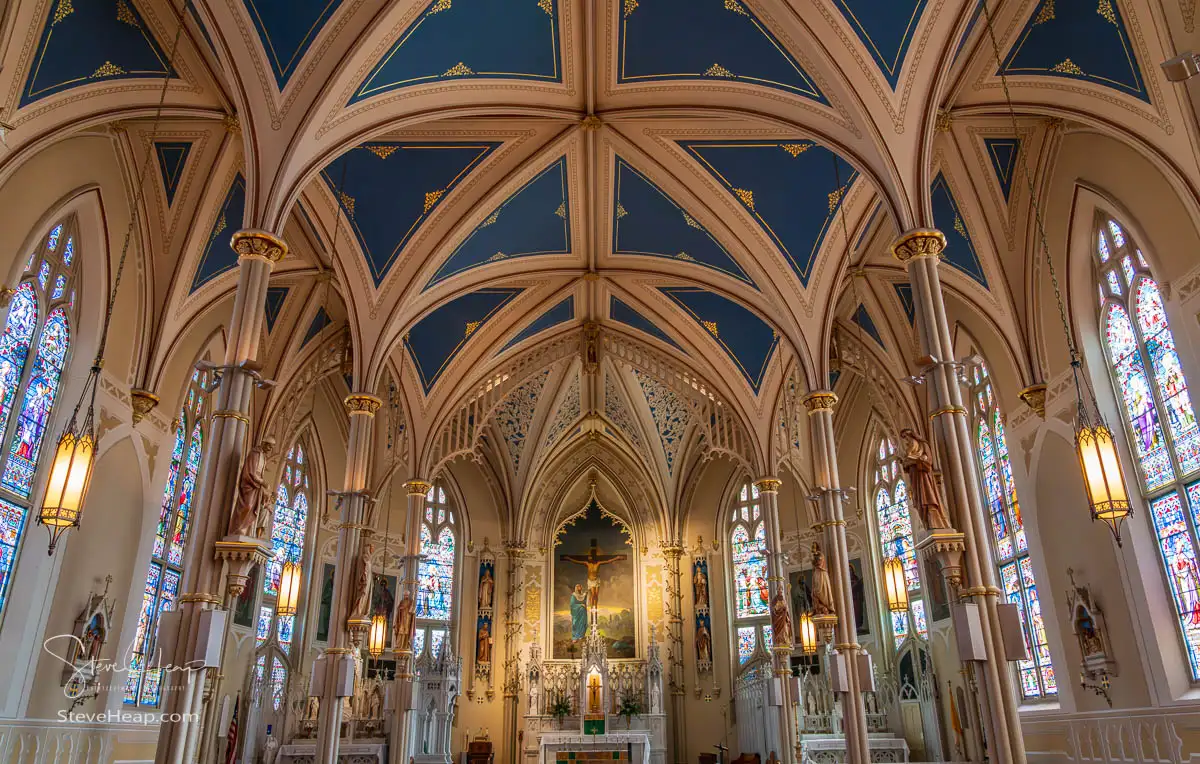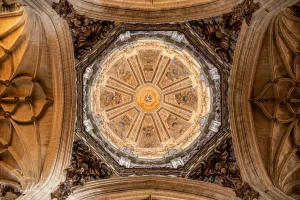After Vicksburg, we sailed through the night and woke approaching Natchez under the John R Junkin bridge across the Mississippi River. We docked in the town this time, although it was a long steep hill to climb because of the low water levels, but, again, Viking provided golf carts to help passengers up the steep slipway. We were in the area of town called “Under the Hill” with a collection of shops and bar/restaurants, but at 8:30am, there wasn’t much life! Of course, I was immediately out and about to catch the early morning light and I strolled (climbed) up the steep road towards the bluff and the main area of the city. I could see the bandstand as I walked up the hill and I had that as my ideal destination to see the views of the river:
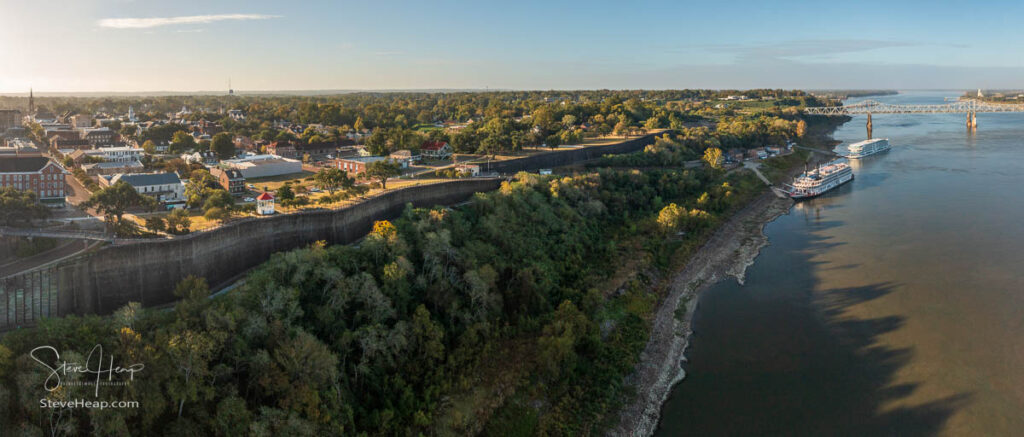
If you could really zoom in here, you would see me standing by the red roofed bandstand in this panoramic drone view of the Natchez bluff with two cruise boats docked by the river.
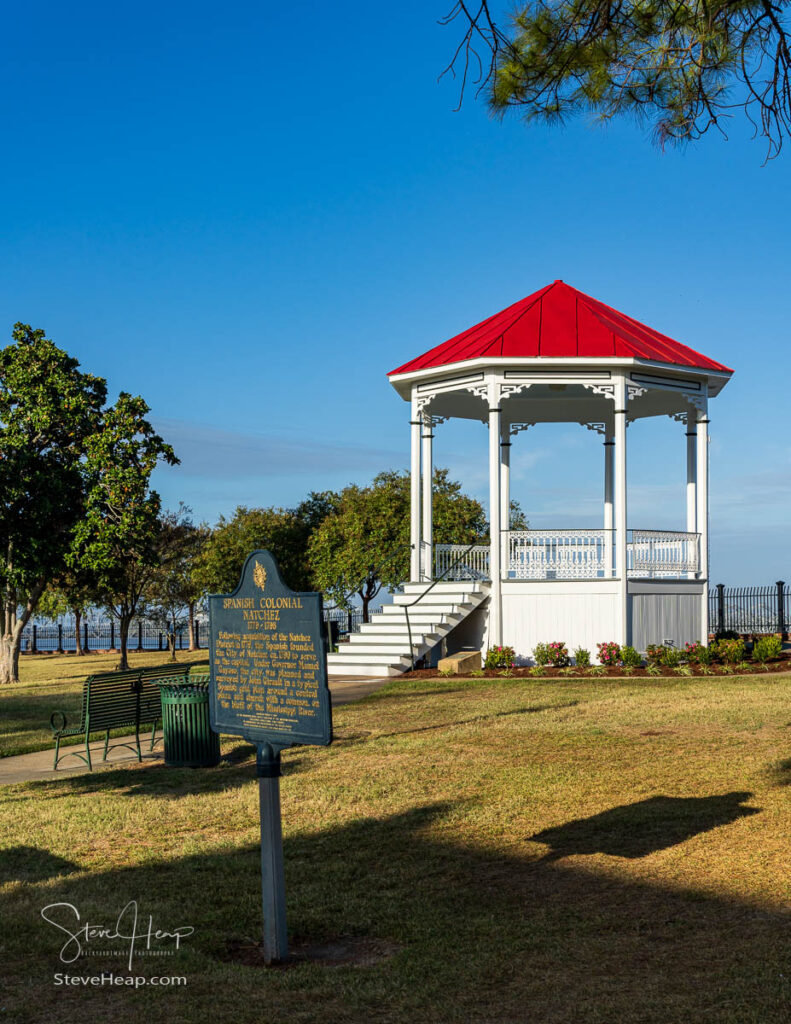
According to the National Park Service:
On April 30, 1865, to commemorate the assassination of President Lincoln, a procession of mourning moved through the streets of Natchez. Federal troops and Natchez citizens gathered around the bandstand in Bluff Park and listened to a eulogy presented by Mr. Dillingham of Maine, a U. S. Treasury agent.
But as you can see, there was no-one around so early in the morning when I was there!
I strolled along Broadway, admiring the historic homes in that part of the city and was particularly impressed by the facade of Rosalie, a historic home perched in its large grounds on the edge of the Bluff overlooking the river below. So, I quickly made my way back to the boat to pick up my wife and make the trek back to visit the home, which opened at 10am. This one is a free visit if you are on the American Queen but not for Viking, but we happily paid the entrance fee. The volunteers in the house were very friendly and helpful and gave us a tremendous tour of the property, which at one stage was the headquarters of the Union army when it took over Natchez during the Civil War while the family continued to live upstairs. Much of the furniture is original and we were most impressed by the visit.
We walked through the historic district then to catch the shuttle back to the boat, admiring the many different styles, including this building – the first brick building in the whole territory and was used as the Capitol building of Mississippi for a time before its later use as a tavern:
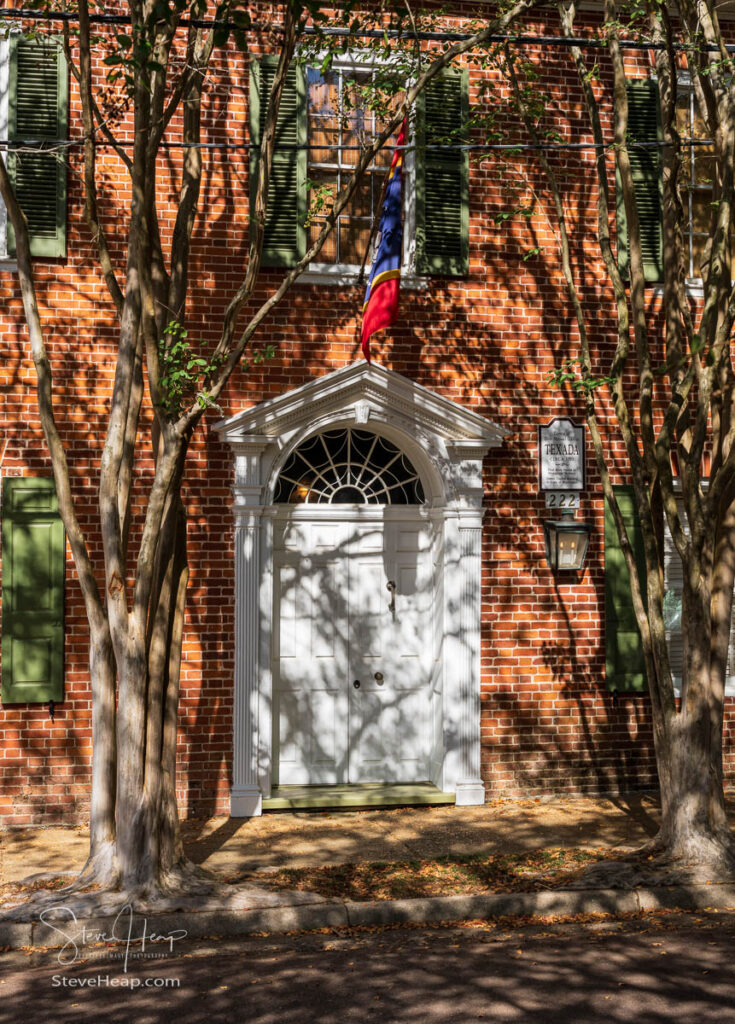
In the afternoon, we were booked on the included tour of Natchez, with, as usual, local guides to explain more about what we were seeing. This tour included a visit to a different historic home, Magnolia Hall, which I have to say was interesting but nothing like as impressive as the furniture in Rosalie. Perhaps one thing that stuck in my mind (and came up later in the day) was that the big display, upstairs, of Prom dresses and suits and photographs of the wearers through the mid 20th Century. Of course, every person in every photograph was white.
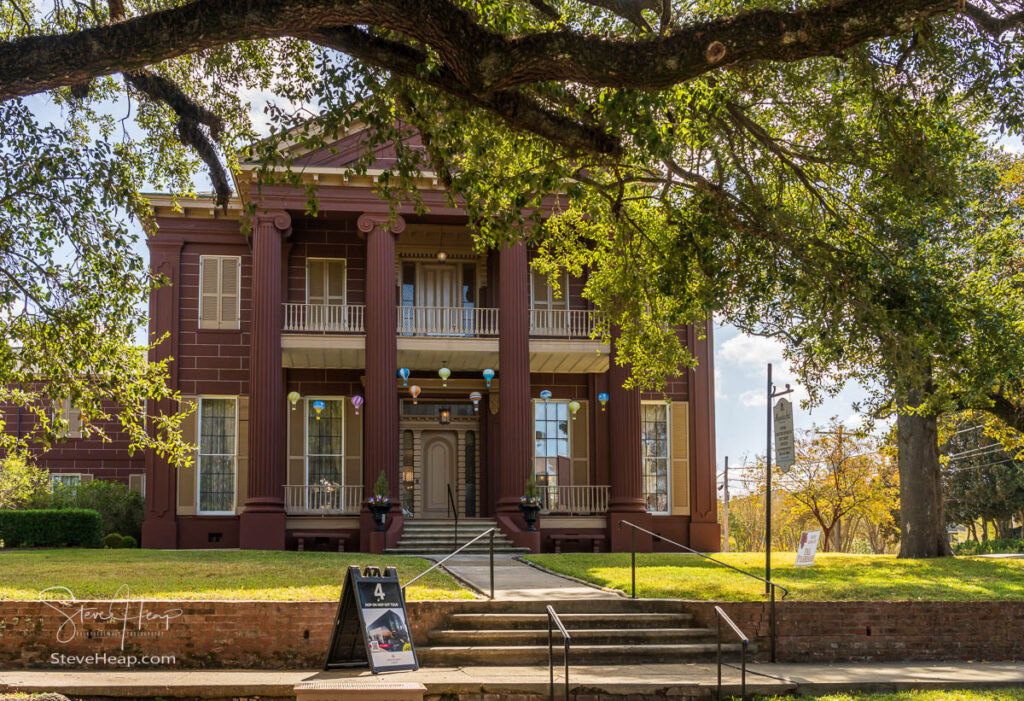
We then visited the very impressive St Mary Basilica and strolled around the park outside it:
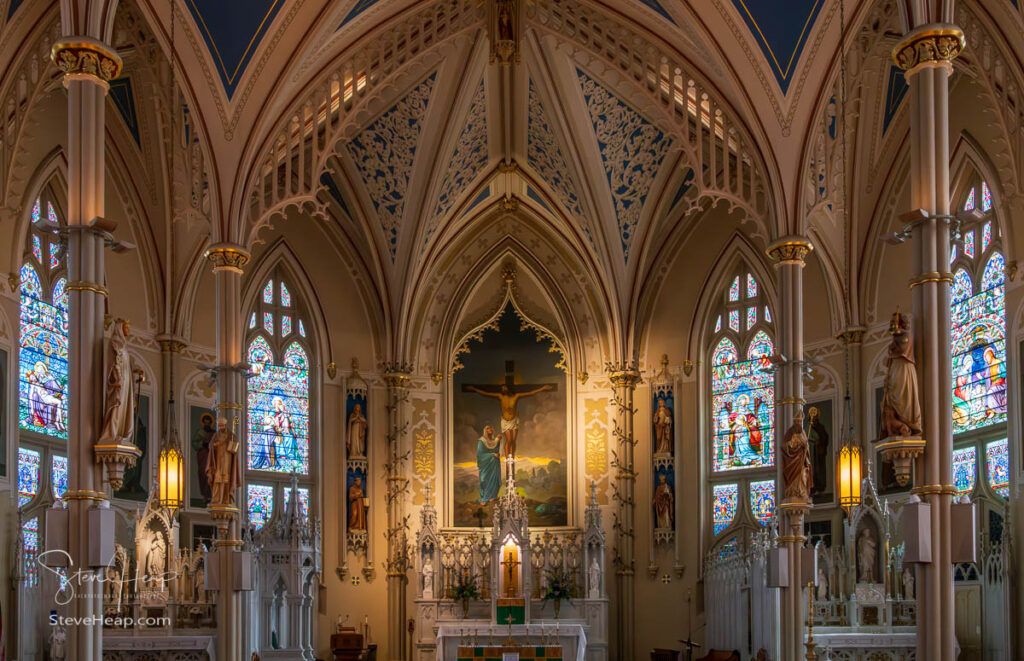
The guide then started to tell us about the dark side of the history of the town and the abysmal treatment of the Black residents which culminated in the arrest of more than 500 demonstrators in 1965 who had been peacefully marching to demand civil rights. They were brutally treated, held for a time in the city Auditorium (which, of course, they could not enter in normal times) and it took until 2015 for an apology to be issued and a memorial erected to recognize the struggle:
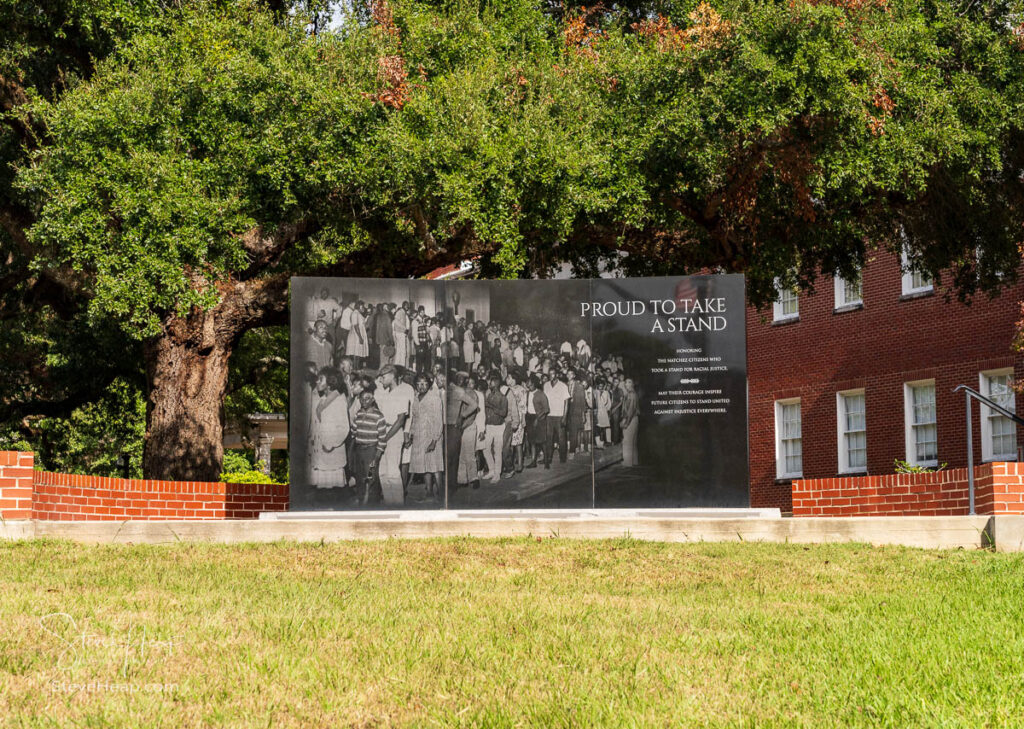
The city of Natchez is currently about 50% Black – what I still find strange (as in almost every city we visited in this part of the cruise) was that the only people we saw were White people on the coaches and in the tour locations. I must just correct that – all the coach drivers were Black.
Back at the boat, we prepared for departure, but the American Queen was the first to leave and treated us to a lovely performance on the steam pipe organ, or calliope as it left the city and made its way upstream as the American Countess arrived to take its place.
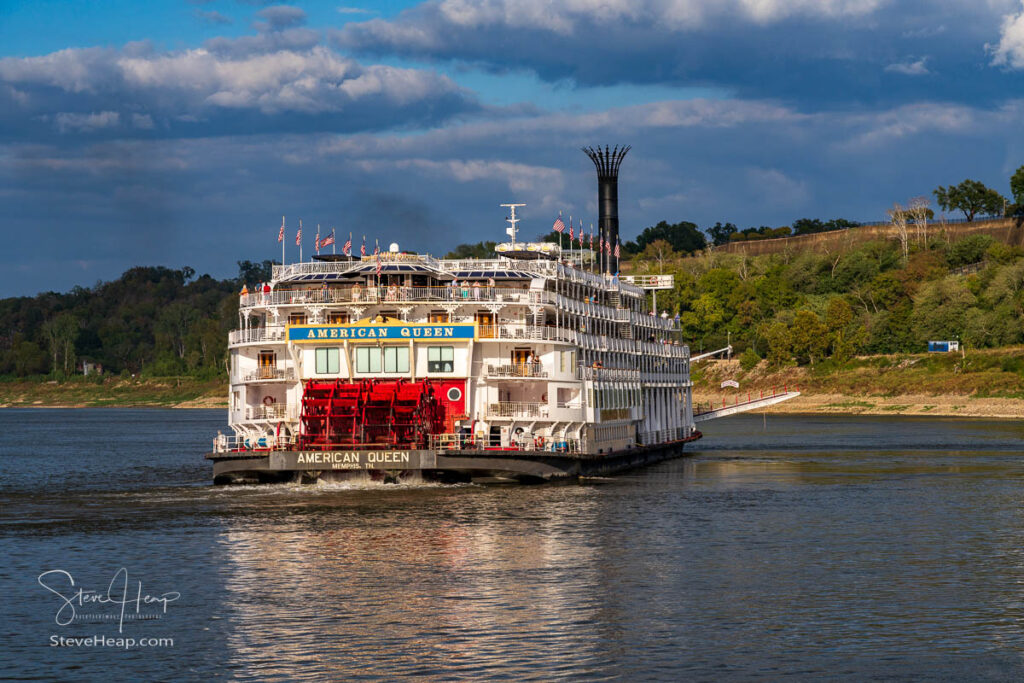
With that, we left the riverbank at Natchez to make our way downstream towards Baton Rouge, passing occasional barges on the way on the clear evening:

This is one of a series of articles about the Viking Mississippi cruise from St Paul, Minnesota to New Orleans. The introductory article can be found here.
